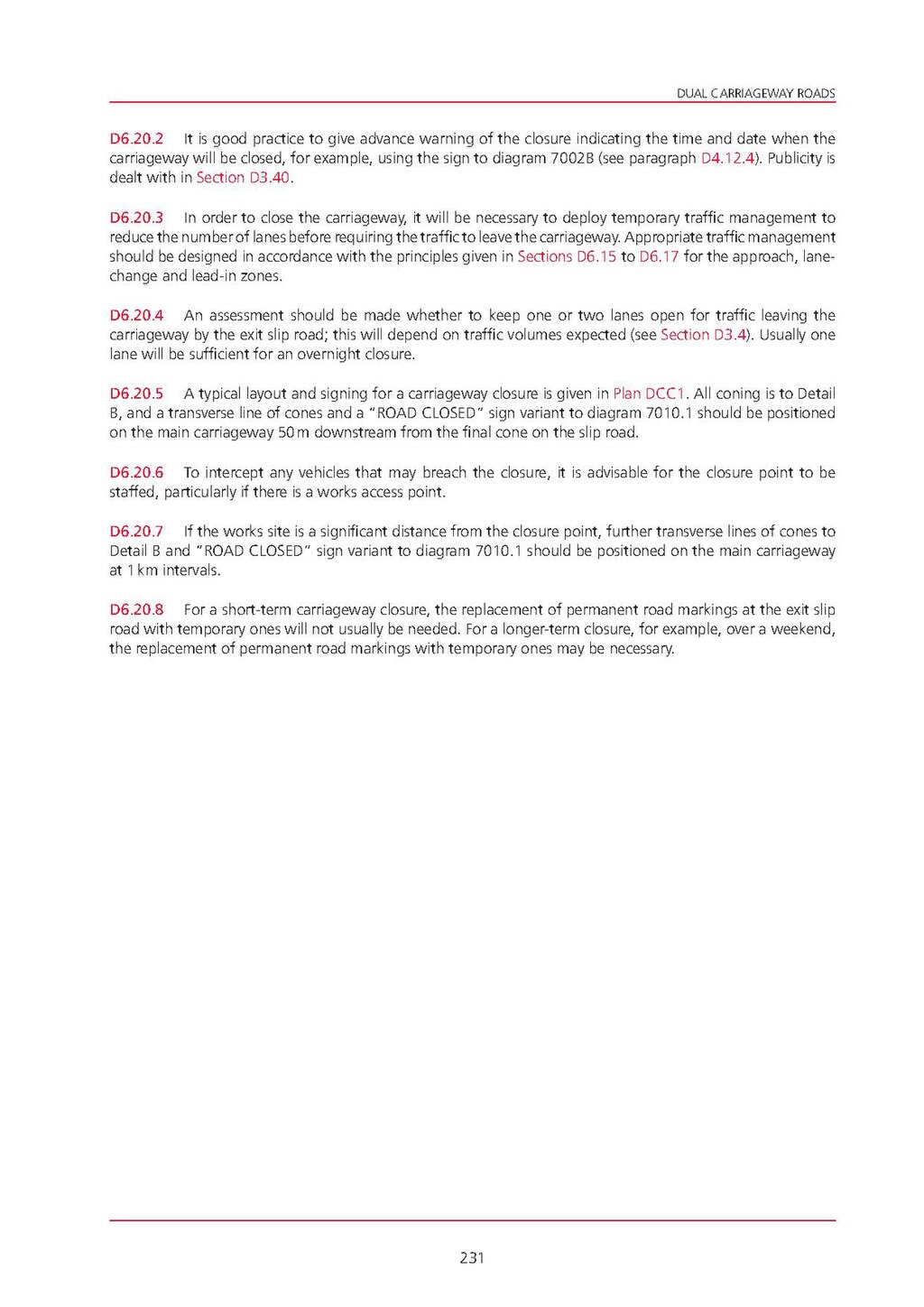D6.20.2 It is good practice to give advance warning of the closure indicating the time and date when the carriageway will be closed, for example, using the sign to diagram 7002B (see paragraph D4.12.4). Publicity is dealt with in Section D3.40.
D6.20.3 In order to close the carriageway, it will be necessary to deploy temporary traffic management to reduce the number of lanes before requiring the traffic to leave the carriageway. Appropriate traffic management should be designed in accordance with the principles given in Sections D6.15 to D6.17 for the approach, lane-change and lead-in zones.
D6.20.4 An assessment should be made whether to keep one or two lanes open for traffic leaving the carriageway by the exit slip road, this will depend on traffic volumes expected (see Section D3.4). Usually one lane will be sufficient for an overnight closure.
D6.20.5 A typical layout and signing for a carriageway closure is given in Plan DCC1. All coning is to Detail B, and a transverse line of cones and a "ROAD CLOSED" sign variant to diagram 7010.1 should be positioned on the main carriageway 50m downstream from the final cone on the slip road.
D6.20.6 To intercept any vehicles that may breach the closure, it is advisable for the closure point to be staffed, particularly if there is a works access point.
D6.20.7 If the works site is a significant distance from the closure point, further transverse lines of cones to Detail B and "ROAD CLOSED" sign variant to diagram 7010.1 should be positioned on the main carriageway at 1 km intervals.
D6.20.8 For a short-term carriageway closure, the replacement of permanent road markings at the exit slip road with temporary ones will not usually be needed. For a longer-term closure, for example, over a weekend, the replacement of permanent road markings with temporary ones may be necessary.
231
